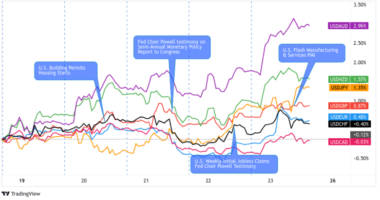
Heads up, Aussie traders!
We’ve got the latest jobs numbers coming out from the Land Down Under on Thursday (Feb. 17, 12:30 am GMT).
Did the Australian labor market sustain earlier gains? Here’s what you need to know.
What happened last time?
- December hiring rose 64.8K vs. 60K consensus
- December unemployment rate fell from 4.6% to 4.2% vs. 4.5% forecast
- Labor force participation rate held steady at 66.1%
Australia’s December jobs figures beat market expectations once again, printing a 64.8K pickup in hiring versus the estimated 60K gain. This brought the jobless rate down from 4.6% to 4.2%, chalking up its largest decline since 2008.
Underlying data revealed that wage growth accelerated in the last month of 2021 while total hours worked picked up during the spending season.
Take note, however, that this followed a set of lockdowns in key cities due to another wave of the pandemic.
What’s expected this time?
- Employment in January probably stayed flat
- January jobless rate likely held steady at 4.2%
A standstill in hiring is expected for the start of this year, as analysts are projecting a flat reading for January. This was probably enough to keep the unemployment rate unchanged at 4.2% though.
Note that this would likely incorporate the Omicron surge earlier in the year, which resulted to another setback to businesses.
Leading indicators have some clues:
- ANZ’s job ads slipped by 0.3% in January after 5.8% drop in December
- AIG services index improved from 49.6 to 56.2
- AIG construction index slipped from 57.0 to 49.0
- AIG manufacturing index down from 54.8 to 48.4
- Markit flash manufacturing PMI fell from 57.7 to 55.3
- Markit flash services PMI tumbled from 55.1 to 45.0
By the looks of it, more leading indicators are pointing to a business slowdown for January, which likely weighed on hiring activity for the month.
A weaker than expected release could further dampen hopes of any RBA hikes happening soon, especially since the central bank already sounded pretty cautious in their latest statement.
If you’re planning on trading this event, don’t forget to keep tabs on the average volatility of AUD pairs, which could serve as a guide in setting entries and exits.









